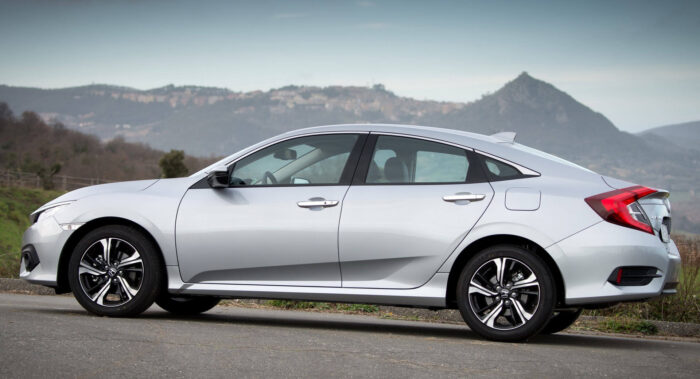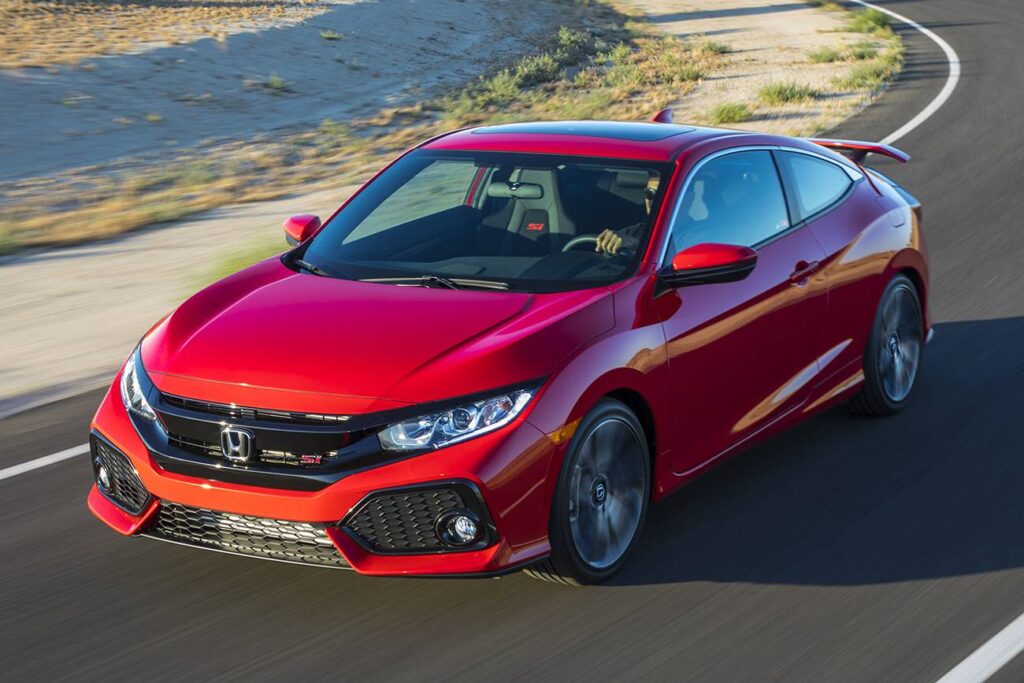Have you ever wondered about the ideal tire pressure for your beloved Honda Civic? Well, you’ve come to the right place! In this comprehensive guide, we’ll delve into the recommended tire pressure settings for different generations and trim levels of the Honda Civic. Additionally, we’ll address a common concern: how to reset the low tire pressure light. So, fasten your seatbelts, and let’s embark on this tire pressure adventure together!
Honda Civic Tire Pressure: Why It Matters
Maintaining proper tire pressure is crucial for several reasons. Firstly, it ensures your Honda Civic handles well, providing a safe and comfortable driving experience. Secondly, it maximizes fuel efficiency, saving you some extra bucks at the gas station. Lastly, correct tire pressure contributes to the longevity of your tires, preventing uneven wear and potential blowouts. So, let’s dive into the specifics!
Recommended Tire Pressure for Each Year of Production
To determine the ideal tire pressure for your Honda Civic, you need to consider the year of production. Each year may have slightly different recommendations, so it’s essential to be aware of these variations. Below, we’ve compiled a handy table to help you find the correct tire pressure for your specific Honda Civic based on the year of production:
8th Generation (2006-2011)
| Year | Recommended Tire Pressure (Front/Rear) |
|---|---|
| 2006 | 30 PSI / 30 PSI |
| 2007 | 30 PSI / 30 PSI |
| 2008 | 30 PSI / 30 PSI |
| 2009 | 30 PSI / 30 PSI |
| 2010 | 30 PSI / 30 PSI |
| 2011 | 30 PSI / 30 PSI |
9th Generation (2012-2015)
| Year | Recommended Tire Pressure (Front/Rear) |
|---|---|
| 2012 | 32 PSI / 32 PSI |
| 2013 | 32 PSI / 32 PSI |
| 2014 | 32 PSI / 32 PSI |
| 2015 | 32 PSI / 32 PSI |
10th Generation (2016-2021)
| Year | Recommended Tire Pressure (Front/Rear) |
|---|---|
| 2016 | 35 PSI / 35 PSI |
| 2017 | 35 PSI / 35 PSI |
| 2018 | 35 PSI / 35 PSI |
| 2019 | 35 PSI / 35 PSI |
| 2020 | 35 PSI / 35 PSI |
| 2021 | 35 PSI / 35 PSI |
Please note that these values are general recommendations, and it’s always a good idea to consult your vehicle’s owner’s manual or the sticker on the driver’s side door jamb for the most accurate information.
Tire Pressure for Different Trim Levels of Honda Civic
In addition to considering the generation, the recommended tire pressure may also vary based on the trim level of your Honda Civic. Different trims may have slightly different weight distributions or use different tire sizes, influencing the optimal tire pressure. Here’s a table showcasing the recommended tire pressure for various trim levels of the Honda Civic:

| Honda Civic Trim Level | Recommended Tire Pressure (Front/Rear) |
|---|---|
| LX | 32 PSI / 32 PSI |
| EX | 32 PSI / 32 PSI |
| Touring | 35 PSI / 35 PSI |
| Si | 35 PSI / 35 PSI |
Again, keep in mind that these values are general recommendations, and it’s crucial to refer to your vehicle’s documentation for precise information.
How to Check Tire Pressure
Checking your Honda Civic’s tire pressure regularly is essential to ensure optimal performance. Here’s a step-by-step guide to help you check your tire pressure accurately:
- Gather the necessary tools: You will need a tire pressure gauge, which can be purchased at any auto parts store, and an air compressor.
- Park your vehicle: Ensure your Honda Civic is parked on a level surface, with the engine turned off.
- Locate the recommended tire pressure: Refer to your owner’s manual or the sticker on the driver’s side door jamb to find the recommended tire pressure for your Honda Civic.
- Remove the valve cap: Unscrew the valve cap from the tire valve stem.
- Attach the tire pressure gauge: Press the tire pressure gauge firmly onto the valve stem. You may hear a slight hissing sound as you do this.
- Read the tire pressure: The gauge will display the current tire pressure reading. Compare it with the recommended tire pressure for your Honda Civic.
- Inflate or deflate as necessary: If the tire pressure is too low, use an air compressor to add air until it reaches the recommended level. If it’s too high, release air by pressing down on the metal pin in the center of the valve stem with the tire pressure gauge.
- Repeat for all tires: Check the tire pressure of all four tires using the same process.
- Replace the valve caps: After adjusting the tire pressure, screw the valve caps back onto the valve stems.
Recommended Tire Pressure by Season
The recommended tire pressure for your Honda Civic may vary depending on the season. Here’s a breakdown of how tire pressure can be affected by different weather conditions:
1. Winter
During winter, tire pressure tends to decrease due to colder temperatures. It is recommended to add a few extra pounds per square inch (psi) of tire pressure to compensate for the drop in pressure. This adjustment ensures adequate traction and handling on slippery road surfaces.
2. Summer
In summer, tire pressure increases as the ambient temperature rises. Higher temperatures cause the air inside the tire to expand, leading to higher pressure readings. It is important to check and adjust the tire pressure to the recommended level more frequently during hot summer months.
3. Other Seasons
During spring and autumn, it is crucial to maintain the recommended tire pressure based on your Honda Civic’s specifications. Moderate temperatures may not have a significant impact on tire pressure, but it’s always advisable to check and adjust as needed.
Resetting the Low Tire Pressure Light
Now, let’s address a common issue faced by Honda Civic owners—the pesky low tire pressure warning light. When this light illuminates on your dashboard, it’s an indication that one or more of your tires have fallen below the recommended pressure. Thankfully, resetting this light is relatively simple. Follow these steps:
- Ensure all your tires are inflated to the proper tire pressure recommended for your specific Honda Civic model (as outlined in the previous sections).
- Locate the tire pressure monitor reset button, usually found beneath the steering wheel or in the glove compartment.
- With the ignition turned on (engine off), press and hold the reset button until the low tire pressure light blinks a few times and then remains steady.
- Release the reset button.
- Start your engine, and the low tire pressure light should no longer be illuminated. If it persists, there might be an issue with one of your tires, and you may need to consult a professional.
FAQs about Recommended Tire Pressure for Honda Civic
1. What happens if I overinflate my tires?
Overinflating your tires can lead to reduced traction, an uncomfortable ride, and increased risk of tire blowouts. It also accelerates tire wear in the center portion, compromising their overall lifespan.
2. Can I use the tire pressure listed on the tire’s sidewall?
No, the tire pressure listed on the sidewall is the maximum pressure the tire can handle, not the recommended pressure for your Honda Civic. Always refer to the recommended tire pressure provided by the vehicle manufacturer.
3. How often should I check my tire pressure?
It is recommended to check your tire pressure at least once a month and before long trips. Regular inspections ensure your tires are properly inflated for optimal performance and safety.
4. Should I adjust the tire pressure when carrying heavy loads?
Yes, when carrying heavy loads or towing, it is advisable to increase the tire pressure according to the recommended levels specified in your owner’s manual. This adjustment helps maintain stability and prevents excessive tire flexing.
5. Can I rely on the tire pressure monitoring system (TPMS)?
While the TPMS provides valuable information about tire pressure, it is still recommended to manually check your tire pressure using a gauge. The TPMS may not always be accurate or indicate gradual changes in tire pressure.
Conclusion
Now that you’re armed with the knowledge of the recommended tire pressure for different generations and trim levels of the Honda Civic, as well as the know-how to reset the low tire pressure light, you can ensure a safer, smoother, and more fuel-efficient driving experience. Remember, maintaining proper tire pressure is an essential part of vehicle maintenance, contributing to both your safety and your Honda Civic’s performance.
So, the next time you hit the road in your Honda Civic, rest assured that your tires are properly inflated and ready to take you on your next adventure with confidence!
